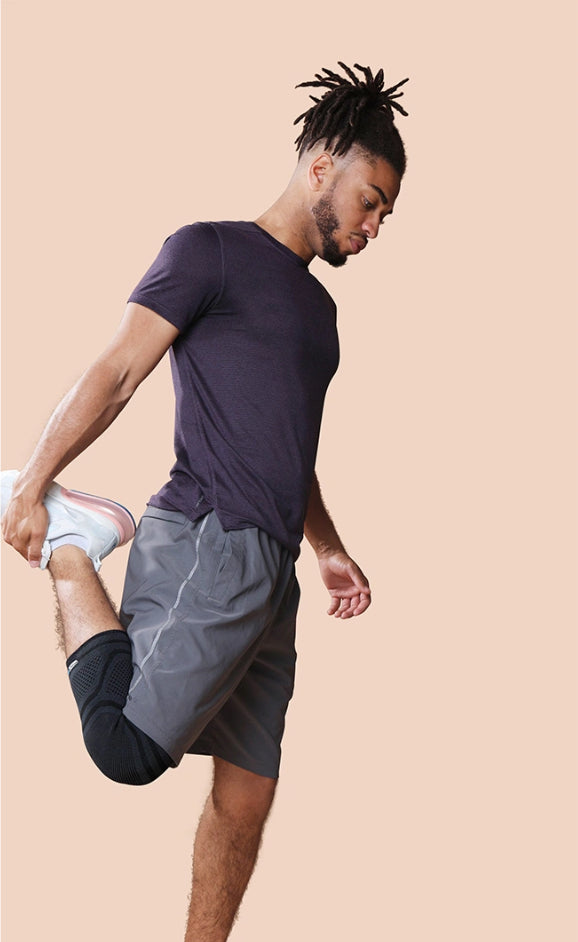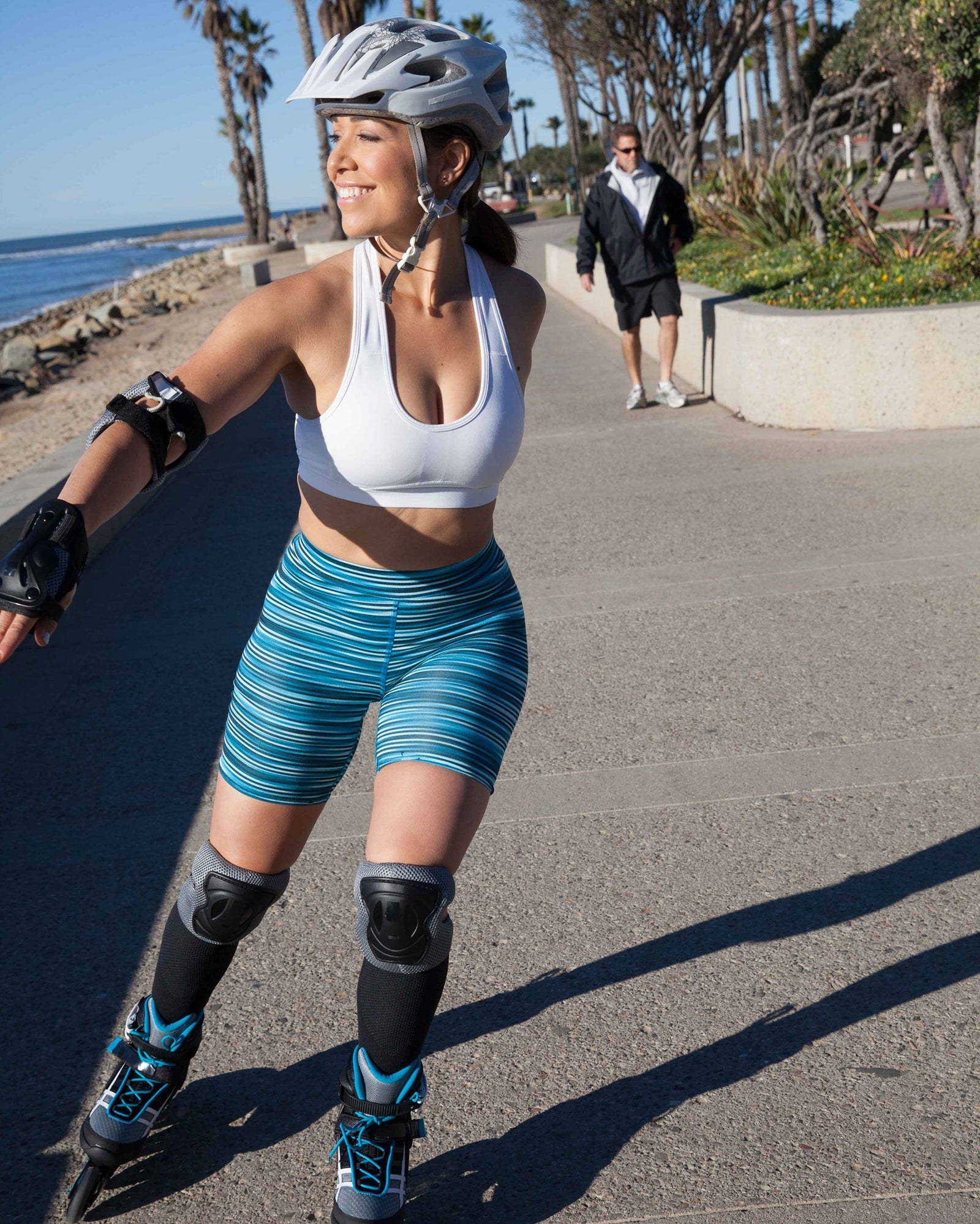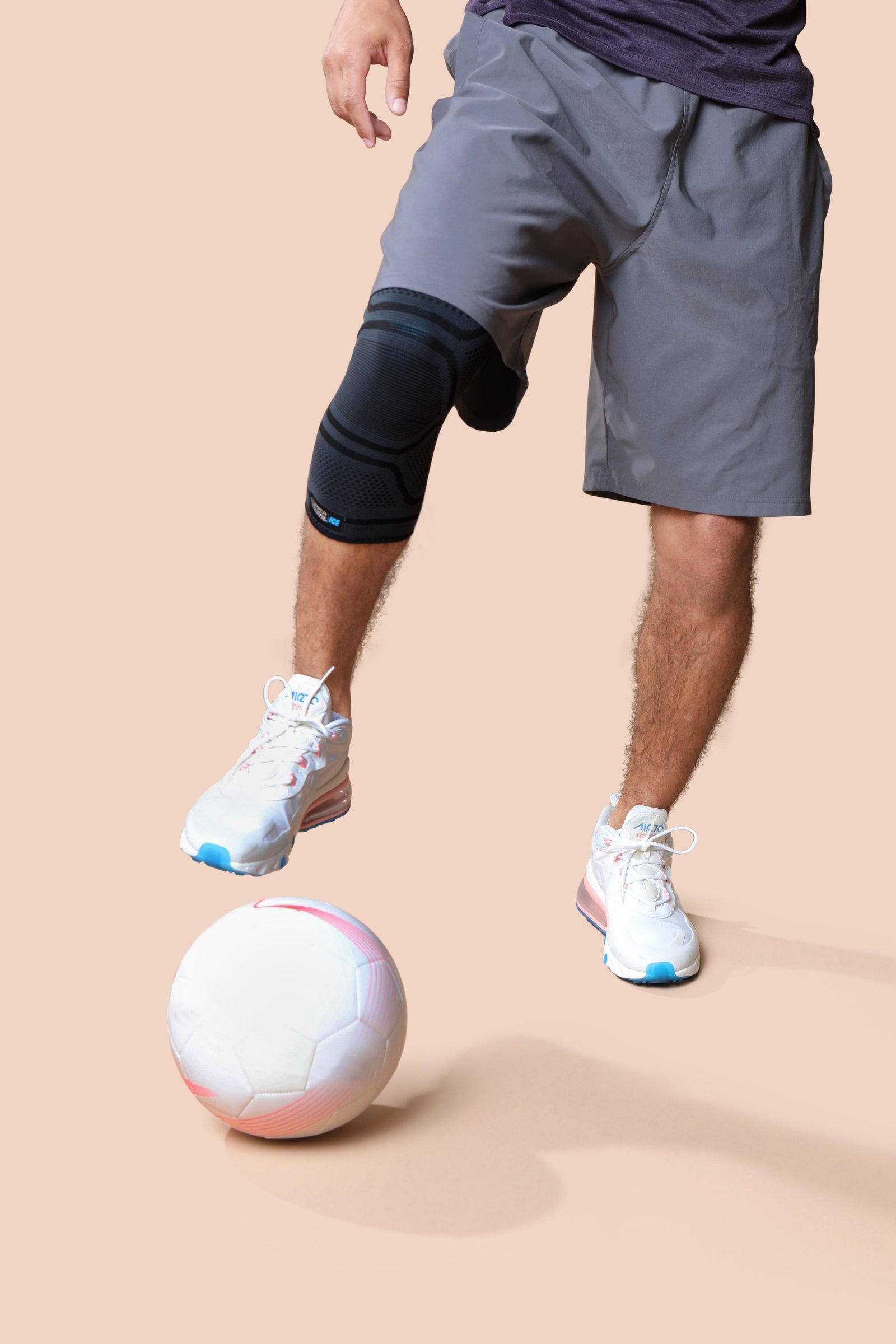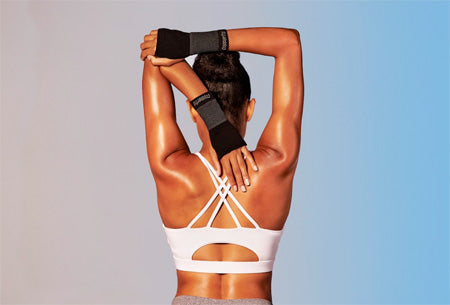Continue Shopping
Your cart is empty
Free shipping on orders over $65
Free socks with any purchase
Free shipping on orders over $65
Free socks with any purchase

G | R | 0 Accounts
Knock knees, or genu valgum, is a common condition characterized by an inward angulation of the knees. It's often observed in children and can sometimes persist into adulthood. Understanding what knock knees are, their causes, and potential solutions is crucial for maintaining an active, comfortable lifestyle.
At Copper Fit, we're committed to providing informative, solution-oriented content to help you stay informed and empowered.
Knock knees, medically known as genu valgum, is a condition where the knees touch or are close together while the ankles are further apart. This is often seen when a person stands up straight or walks. It's most common in young children and usually corrects itself as they grow.
However, in some cases, it can persist into adulthood or develop later in life due to various factors. The condition involves the lower body's alignment, particularly the thighs and lower legs.
In a person with knock knees, the alignment of these parts is such that it forms an inward angle when the knees are together. This can sometimes result in an unusual gait or walking pattern. This angular deformity can be more pronounced in certain postures or activities, such as running or climbing stairs.
A certain degree of inward angulation is normal in children and usually doesn't cause any long-term issues. However, if the condition is pronounced or persists into adulthood, it may require further attention.
Understanding the nature of knock knees, its implications, and how it can impact daily activities is vital for effective management and maintaining a comfortable, active lifestyle.
Knock knees can occur due to a variety of factors. In children, it's often a part of normal growth and development. The condition typically appears when a child is around two to three years old and generally corrects itself by the age of eight.
However, in some cases, knock knees can be caused by genetic factors, where the condition runs in families. Other potential causes include obesity, which puts extra pressure on the knees, and certain medical conditions like rickets, which affects bone growth and development.
Injury or trauma to the knee can also lead to knock knees. This is particularly common in adults who have suffered a knee injury or undergone knee surgery. In such cases, the development of knock knees may be a part of the body's response to the injury or a result of changes in the way the person walks or stands after the injury.
The most obvious symptom of knock knees is the appearance of the knees themselves. When standing with your feet together, your knees may touch or nearly touch while your ankles are apart. This can be more noticeable when you walk or run, as the inward angulation of the knees can affect your gait.
In some cases, knock knees can cause discomfort or pain, especially after physical activity. You might also notice a change in the way you walk, with a more pronounced in-toeing or 'duck-footed' gait.
In severe cases, the misalignment can lead to additional strain on the knees and surrounding muscles, potentially causing chronic knee pain or contributing to early-onset arthritis.
Knock knees are usually diagnosed through a physical examination. Your healthcare provider will observe your knees while you're standing and may ask you to walk or run to assess your gait. They may also measure the distance between your ankles when your knees are together, which can give a clear indication of the severity of the condition.
In some cases, an X-ray or other imaging tests may be used to get a more detailed view of the knee joint and surrounding structures. These tests can help determine the severity of the condition and rule out any underlying issues that might be causing the misalignment. They can provide insights into the structure of your knee and leg, which can be crucial in formulating an effective treatment plan.
Additionally, your healthcare provider might ask about any symptoms you've been experiencing, such as pain or discomfort, and how these symptoms are affecting your daily activities. They may also inquire about your medical history to identify any potential risk factors.
Always consult a healthcare professional if you or your child have noticeable knock knees, especially if it's accompanied by knee pain or affects walking. Early diagnosis and intervention can help manage the condition effectively and prevent potential complications.
While knock knees often correct themselves in children, persistent or severe cases can lead to potential complications. One of the main concerns is the increased strain on the knee joint, which can accelerate wear and tear and potentially lead to early-onset arthritis. This is particularly concerning as it can significantly impact an individual's mobility and quality of life.
In addition, the altered gait associated with knock knees can put extra stress on other parts of the body, leading to discomfort or pain in the hips, ankles, or feet. Over time, this can affect mobility and overall quality of life. This is why it's crucial to monitor the condition and seek professional advice if symptoms persist or worsen.
Further complications could include difficulty in performing certain physical activities or sports. In severe cases, the person may also experience self-consciousness or psychological distress due to the appearance of their legs.
It's essential to seek professional medical advice if you're experiencing persistent knee pain or if knock knees are affecting your ability to walk or perform daily activities. Early intervention can help prevent these complications, support your overall wellness, and enhance your ability to lead an active, comfortable life.
The management of knock knees depends largely on the underlying cause and the severity of the condition. In children, where knock knees are often a part of normal development, no specific treatment may be necessary. Regular check-ups can help make sure the condition is resolving as expected.
In adults or severe cases, various strategies can be employed. Physical therapy exercises can help strengthen the muscles around the knee, improving stability and alignment. Weight management can also be beneficial, as excess weight can put additional strain on the knees.
Orthotic devices, such as special shoe inserts or braces, can sometimes be used to improve alignment and reduce discomfort. In severe cases, surgical intervention may be considered.
While Copper Fit products are not a treatment for knock knees, they are designed to support joint comfort and mobility. For instance, our knee sleeves can provide comfort during physical activities, offering extra support for the knee joint.
As always, it's best to consult with a healthcare professional for a comprehensive management plan tailored to your needs.
If you or your child exhibit noticeable signs of knock knees that persist beyond the age of eight, it's crucial to consult a healthcare professional. This is especially crucial if the condition is accompanied by knee pain, a significant change in gait, or if it affects daily activities.
Changes in the way you walk or run, discomfort during physical activities, or a visible inward angulation of the knees are all signs that you should seek professional advice. Adults who develop knock knees should also seek medical advice, as the condition is less common in adulthood and may be a sign of an underlying issue.
This could be due to factors such as injury, obesity, or certain medical conditions. Early intervention can help manage the condition effectively, prevent potential complications, and support your overall wellness.
Moreover, if you're an athlete or engage in regular physical activities, and you notice that knock knees are affecting your performance or causing discomfort, it's advisable to consult a healthcare professional. They can provide guidance on how to manage the condition while maintaining an active lifestyle.
At Copper Fit, our mission is to support your comfort and recovery, empowering you to stay active and feel your best every day. Keep in mind that seeking timely professional advice is a crucial step in managing conditions like knock knees and maintaining your overall wellness.
Knock knees, while common in children, can sometimes persist into adulthood or develop due to various factors. Understanding what knock knees are, their causes, symptoms, and potential complications is crucial for managing the condition effectively.
Early diagnosis, appropriate management strategies, and, when necessary, professional intervention can help prevent potential complications and support overall wellness. At Copper Fit, we're committed to providing informative, solution-oriented content to support an active, comfortable lifestyle.
Sources:
Genu Valgum - StatPearls | NCBI Bookshelf
Benefits of Physical Activity | CDC
X-ray may be best screening tool for diagnosing knee pain | Harvard Health




